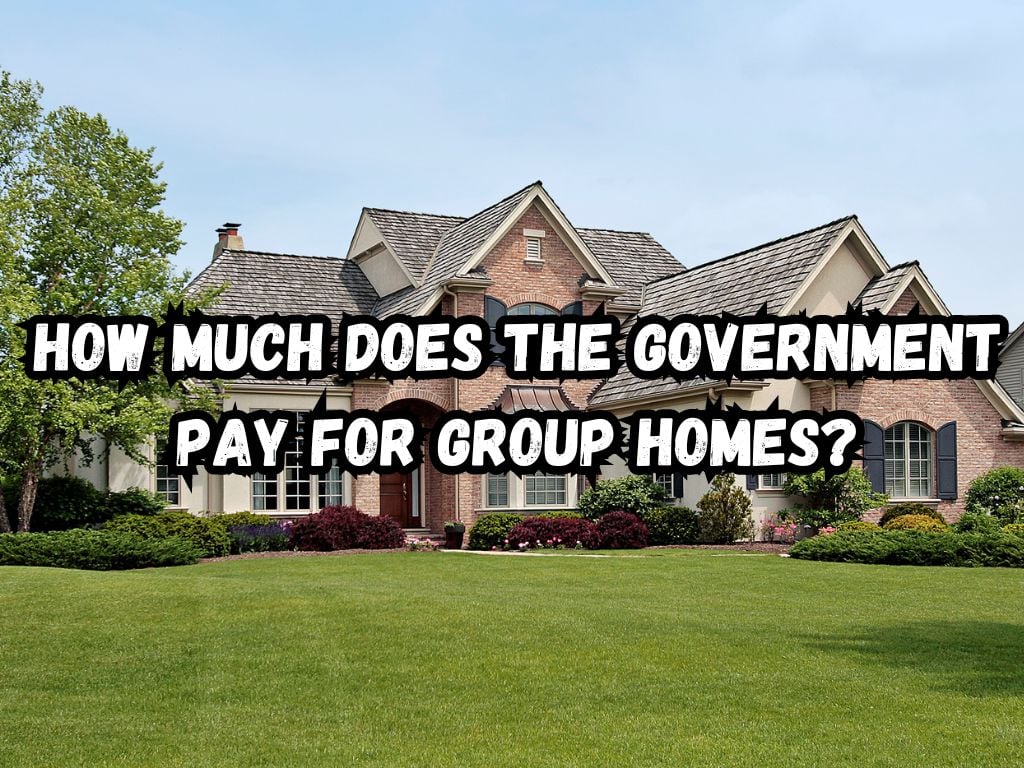Group homes play a vital role in providing accommodation and support services to vulnerable populations in our society.
These facilities cater to individuals with disabilities, mental health challenges, or those transitioning from institutional care.
While the provision of adequate funding is crucial for the effective functioning of group homes, many wonder about the extent of government payments allocated to these facilities.
In this article, we will delve into how much does the government pay for group homes, exploring federal, state, and local contributions, factors influencing payment levels, the funding application process, challenges faced, and pertinent FAQs.
Government Funding for Group Homes
A. Federal Funding
Federal funding serves as a significant source of financial support for group homes across the nation. The federal government allocates funds through various programs, each designed to address specific needs and promote the well-being of individuals residing in group homes.
Examples of federal funding programs include the Developmental Disabilities Assistance and Bill of Rights Act (DD Act), Medicaid Home and Community-Based Services (HCBS) Waivers, and the Substance Abuse and Mental Health Services Administration (SAMHSA) grants.

B. State Funding
State governments also play a critical role in providing financial assistance to group homes, which typically varies based on geographical location and state-specific policies.
These funding programs complement federal resources, ensuring that group homes receive adequate support. States may allocate funds through programs such as the State Developmental Disabilities Councils, State Developmental Disabilities Planning Councils, or Mental Health Services Block Grants.
C. Local Funding
Apart from federal and state contributions, local governments may allocate funds to support group homes within their jurisdictions. Local funding can be used to supplement gaps and meet specific community needs.
Local government funding sources for group homes can include property taxes, grants from local foundations, or fundraising efforts within the community.
D. Differences in Funding Levels
Government payments for group homes can vary significantly across different levels. While federal funding may serve as the primary source, states and localities often supplement assistance based on their available resources and priorities.
Factors such as the number of individuals served, the services provided, and the overall capacity of group homes can influence funding levels. It is crucial to recognize these variations and understand their implications for service quality and availability.
How Much Does the Government Pay for Group Homes? Factors Affecting Government Payments for Group Homes
A. Size and Capacity of Group Homes
The size and capacity of group homes are key determinants of government payments. Larger homes that can accommodate more residents might receive higher levels of funding due to the scale of services provided.
Additionally, facilities with the ability to accommodate individuals with varying needs, such as specialized medical equipment or staff expertise, may also receive increased financial support to ensure quality care.
B. Services Provided
The range of services provided by group homes is another factor influencing government payments. Homes offering comprehensive services, including medical support, counseling, and life skills training, might be eligible for higher funding.
It is essential for group homes to meet specified criteria and comply with government regulations to access funds earmarked for specific services.
C. Location and Regional Differences
Geographical factors also play a significant role in determining government payments for group homes. The cost of living, population density, and geographic location can influence funding levels.
Higher-cost regions might receive more substantial financial support due to increased expenses associated with operating in such areas. It is crucial to recognize the regional disparities in funding to ensure fair and equitable distribution of resources.
Funding Application Process for Group Homes
A. Eligibility Criteria
To access government funding, group homes must fulfill specific eligibility criteria. This typically includes obtaining necessary licenses, certifications, and adhering to health and safety regulations. Group homes must meet established requirements, ensuring they are equipped to provide appropriate care to residents.
B. Application Process
The application process for government funds involves several steps. Group homes are usually required to submit an application form, accompanied by supporting documentation.
These documents may include facility licenses, financial statements, and compliance certificates. It is essential to ensure that all application requirements are met accurately and promptly.
C. Review and Approval Process
Upon receiving applications, government entities responsible for funding review and evaluate each submission. The review process may entail assessing adherence to eligibility criteria, examining financial statements, and considering the quality of services provided by the group home.
Timelines for review and approval can vary depending on government regulations, but diligent follow-up can help expedite the process.

Challenges and Limitations of Government Funding
A. Insufficient Funding
One significant challenge faced by group homes is a lack of adequate government funding. Limited financial resources can result in reduced staff-to-resident ratios, limited services, and compromised quality of care. Advocacy efforts are necessary to highlight the importance of adequate funding and its direct impact on the well-being of residents.
B. Compliance and Reporting Requirements
Group homes receiving government funding must fulfill compliance and reporting obligations. These requirements are intended to ensure transparency, accountability, and the appropriate use of funds.
Group homes must consistently meet reporting deadlines, track expenses accurately, and adhere to regulatory guidelines to maintain eligibility for funding.
Frequently Asked Questions
How is government funding for group homes different from other healthcare facilities?
Government funding for group homes differs from funding for hospitals or medical institutions as it is specifically allocated for residential facilities providing long-term care and support services to individuals with disabilities or mental health challenges.
Group homes focus on creating a nurturing environment and promoting independent living skills.
Can group homes also receive private funding in addition to government support?
Yes, group homes can receive private funding through charitable donations, grants from foundations, or fundraising initiatives.
Private funds often supplement government payments, enabling group homes to enhance the quality of services provided and expand their offerings.
Are there any tax benefits available for group homes?
Group homes may qualify for certain tax benefits, particularly if they are recognized as nonprofit organizations. Tax-exempt status can provide significant financial relief, saving valuable resources that can be redirected toward improving resident care and facility maintenance.
Conclusion
Government funding plays a crucial role in supporting the provision of quality care and services in group homes.
Federal, state, and local contributions collectively ensure that these facilities can cater to the needs of individuals with disabilities and mental health challenges.
Understanding the intricacies of government payments, factors influencing funding levels, and the application process is essential for group homes to navigate the system effectively.
By addressing challenges and advocating for adequate funding, we can help create a more inclusive society that supports the well-being and independence of all individuals.


 Tags:
Tags:










